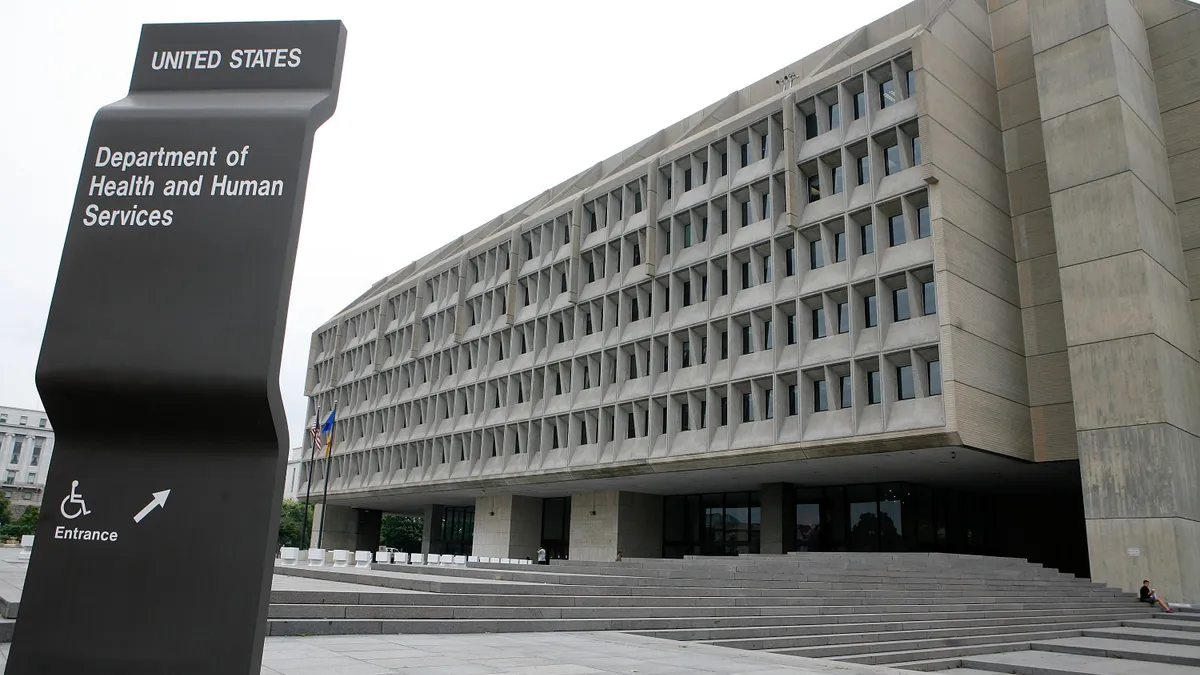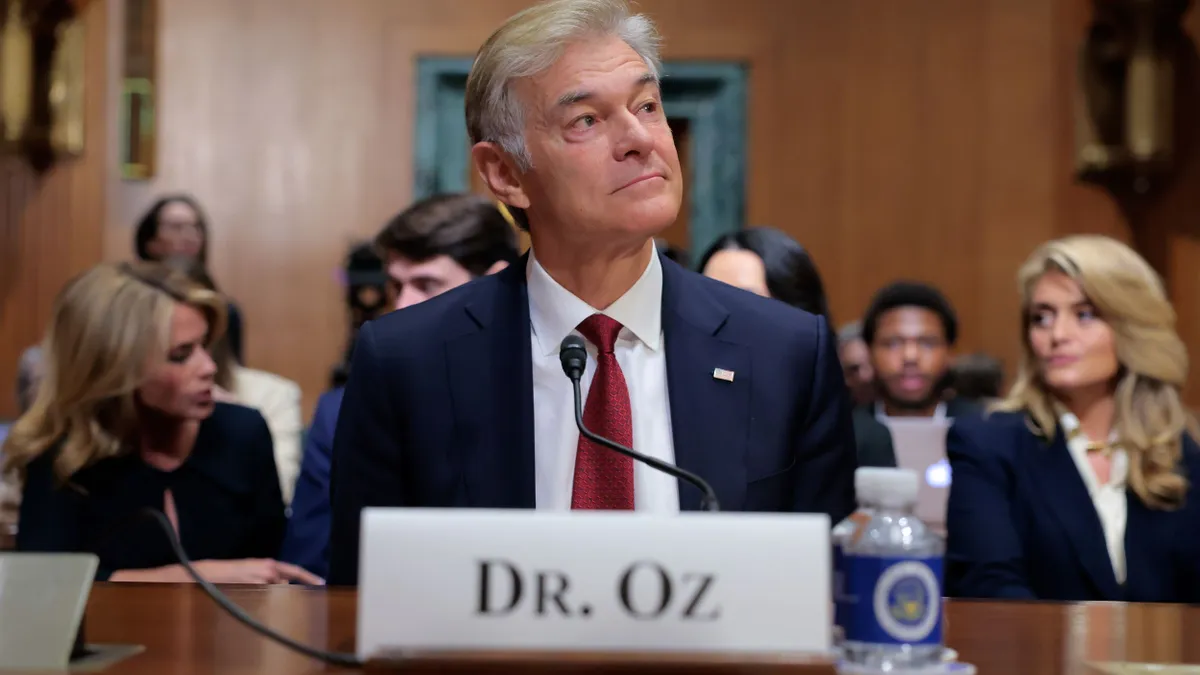Dive Brief:
- The CMS is proposing to raise Medicare payments for inpatient hospital services by 2.4% next year — the lowest rate since 2019, and one that comes at a time of acute economic uncertainty for hospitals.
- Hospital groups decried the proposed rate, which would cause their payments to increase by an estimated $4 billion in the 2026 fiscal year, as inadequate. Still, the CMS generally increases rates between proposed and final payment rules.
- The proposed rule issued Friday also includes a flurry of requests for information as the CMS looks to pivot priorities under the new leadership of Administrator Mehmet Oz, the former physician and television personality, including on how the agency can deregulate.
Dive Insight:
The 2.4% rate increase reflects a hospital market basket increase of 3.2% reduced by a 0.8 percentage point adjustment for productivity.
Overall, both for-profit and nonprofit hospitals will get an estimated 2.3% rate increase next year as a result of the rule, according to the CMS.
The rates are still higher than what the CMS offered before the COVID-19 pandemic. In 2019, for example, hospitals received a 1.8% payment update.
A clearer picture of how the rule might affect hospital finances will emerge when publicly traded operators begin reporting first quarter earnings later this month. Still, lobbies for the hospital industry did not react favorably.
“Many hospitals across the country, especially those in rural and underserved communities, already operate under unsustainable financial situations, including negative margins. We urge CMS to reconsider its policy in the final rule,” Ashley Thompson, the senior vice president of public policy analysis and development for the American Hospital Association, said in a statement.
The AHA also took issue with payment changes for long-term care hospitals, which care for complex patients who need extended inpatient stays. Despite a 2.6% proposed rate increase, long-term care hospitals will suffer from regulators raising the threshold for them to qualify for high-cost outlier payments, according to Thompson.
The facilities already “absorb tens of thousands of additional dollars in losses before Medicare will help cover some costs of extremely ill beneficiaries,” Thompson said. “CMS’ proposal this year to increase this threshold even more ... would make it increasingly difficult for [long-term care hospitals] to care for these patients and alleviate pressure on their acute-care hospital partners.”
However, the AHA did applaud the CMS’ request for information on how they can pare back regulatory burden, something the CMS said it was doing to comply with President Donald Trump’s January executive order requiring agencies to identify 10 regulations they can eliminate for each new regulation they issue.
The CMS also solicited feedback on how it can improve digital quality measurement, including how best to measure well-being and nutrition in the Medicare program.
Regulators also proposed tweaks to some quality metrics that can result in lower payments to hospitals if they don’t measure up — and eliminated others, including one metric meant to measure hospitals’ commitment to health equity and another measuring the level of COVID-19 vaccination among hospital employees.
The changes align with Trump’s larger pushback against diversity, equity and inclusion, including in the healthcare industry, and skepticism towards vaccines among the highest ranks of HHS leadership.
Although profit margins improved for many operators last year, hospitals have been struggling with higher costs amid persistent inflation, causing some chains to pivot toward lower-cost outpatient care and reduce other services.
Hospitals are also staring down the barrel of a potential trade war and looming cuts to Medicaid reimbursement, as Congress inches closer to a plan that would likely involve slashing the safety-net program.
Also on Friday, the CMS proposed a 2.8% Medicare rate increase for skilled nursing facilities; a 2.6% increase for inpatient rehabilitation facilities; and a 2.4% increase both for inpatient psychiatric facilities and for hospice providers.















